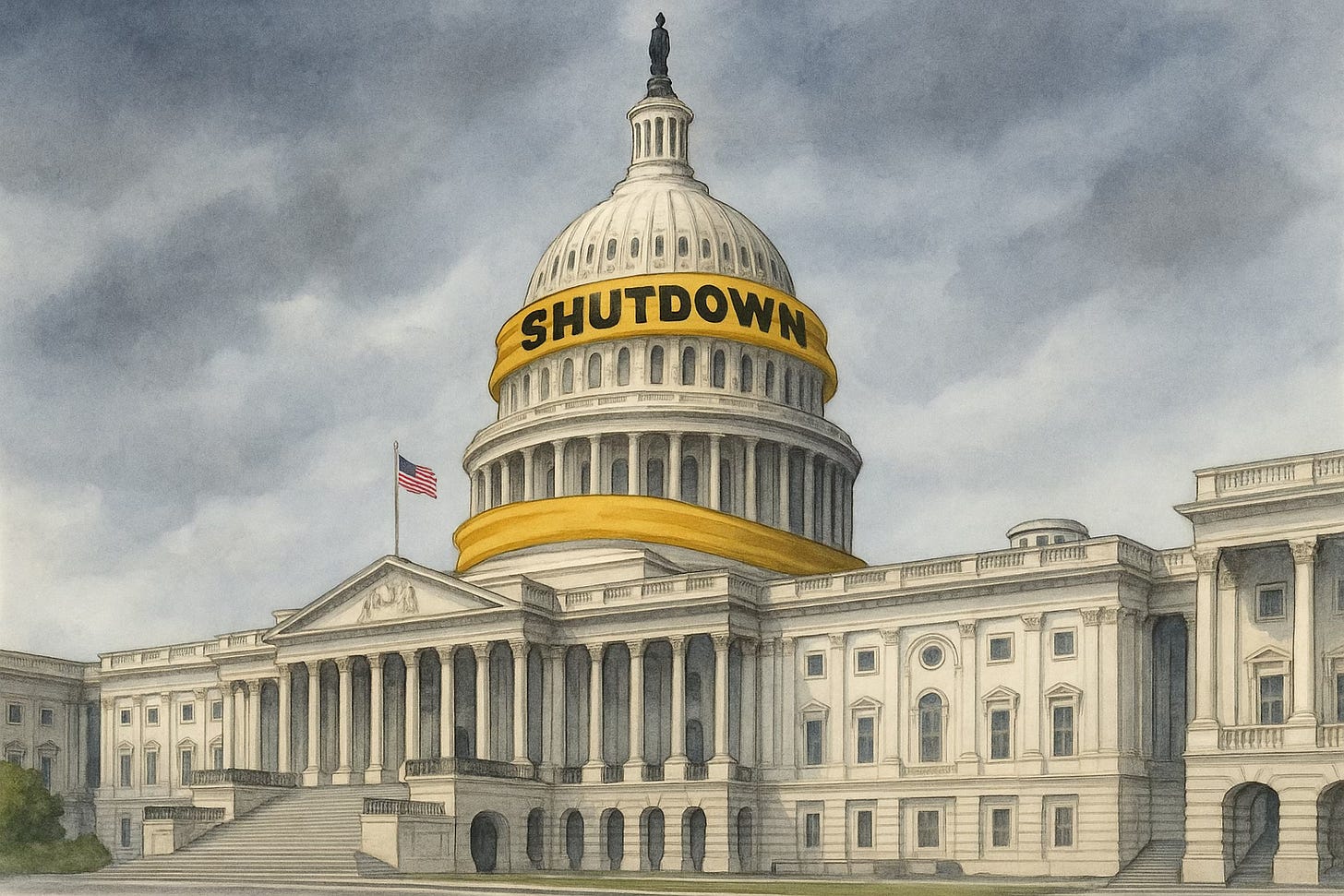Shutdown Economics
A ritual of dysfunction that costs more every round.
Shutdowns are not budgeting.
A familiar ritual: manufacture a crisis, slap on a price tag big enough to weaponize, and let the spectacle reward the loudest faction while the bill lands on workers, contractors, and small firms that needed government to act like an adult.
The White House floated a weekly hit near $15 billion. Major private forecasters put it closer to $7 billion.
Same shutdown. Same economy. Two models. Two assumptions.
The $7 billion camp counts what can be pointed to. Furloughed workers. Frozen contracts. Procurement on ice. The premise: doors reopen, back pay lands, activity resumes.
The $15 billion case prices the contagion. Confidence sours. Regulators stop moving. Credit and hiring decisions slip or die. The math leans on a 0.2 percentage point annualized GDP hit instead of the 0.1 used by many banks.
Not a rounding quibble; a worldview divide.
Both frameworks are plausible. One trims the blast radius. The other measures it.
The Congressional Budget Office tallied the 2018–2019 closure at $11 billion in lost output across two quarters. $3 billion never came back. Back pay didn’t fix it. Resuming operations didn’t either.
That official tab is likely light. The ledger misses the firm that couldn’t land a permit in time, the shop that needed an SBA loan and got a wall instead of capital, and research teams that lost momentum and never regained it. Not everything delayed is recovered; some of it is erased.
Recent shutdowns torched nearly $4 billion in public money: about $3.7 billion in back pay to employees legally barred from working, plus roughly $338 million in lost fees and administrative churn. Deadweight.
The workforce hit lingers. Furloughs act like a 10 percent pay cut to morale. Talent leaves. Others disengage. Institutional knowledge cannot be replaced on command, and this government steers a massive share of economic activity.
Meanwhile, the machinery stalls. SBA lending halts. SEC filings slip. Permitting stops. For a small firm that needs capital this quarter, after a shutdown often means no hires, no inventory, no expansion. Those plans don’t wait in the lobby. They get canceled.
The data blackout compounds the mess. Key releases go dark while the Fed still has to set policy. Less information means more caution from businesses and markets at exactly the wrong time. A White House memo estimated a month-long closure could add 43,000 to unemployment, largely outside the federal workforce. Those workers don’t get back pay.
Both parties understand the leverage. Each extracts the clip needed for the next ad.
Price it:
About $7 billion per week if assuming a clean reversal with minimal spillovers.
About $15 billion per week if counting confidence shocks and regulatory choke points.
$11 billion for a long closure, with $3 billion permanently lost because lost output is not a layaway plan.
Plus billions in direct waste that buys nothing but theatrics.
The rest is spin. The weekly number matters, but the real cost is the slow decay that never shows up in tidy rebounds. Human capital drained. Competence eroded. Private plans scrapped because government chose to stop working.
Argue over seven versus fifteen if it helps. The outcome is the same.



third shut down in a ROW under Trump - 4th this century under the GOP